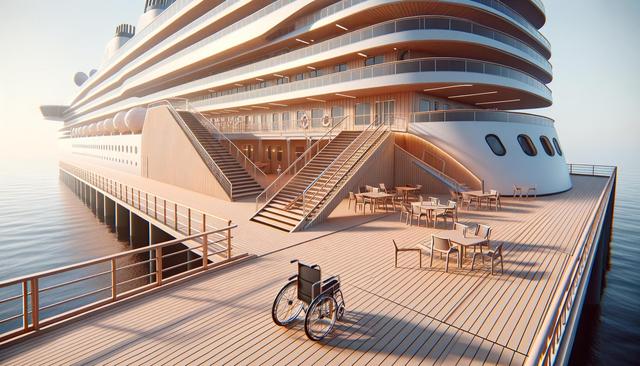
Accessible Cruises: A Guide for Travelers with Disabilities
What to Look for in an Accessible Cruise
When planning a cruise, passengers with limited mobility, vision impairments, or other accessibility needs should consider specific features that can make their journey more comfortable and enjoyable. Accessible cruises typically include design elements and services that cater to various levels of assistance, ensuring a smoother experience from start to finish.
Key features to look for include:
- Wheelchair-accessible cabins with wider doorways and roll-in showers
- Elevators and ramps on every deck
- Visual and audio aids for guests with hearing or sight limitations
- Priority boarding and disembarkation options
- Accessible excursions and shore tours
Some ships also offer accessible pools with lifts, braille signage throughout the vessel, and staff trained specifically to assist guests with disabilities. It’s important to contact the cruise line ahead of time to discuss individual needs and confirm availability of services and accommodations.
Cruise Lines with Strong Accessibility Programs
Several cruise lines have made significant efforts to accommodate travelers with disabilities, offering modern ships designed with accessibility in mind. While no cruise is one-size-fits-all, some companies have earned praise for their commitment to inclusive travel.
These cruise lines typically provide:
- Dedicated accessibility coordinators
- Detailed accessibility guides and resources on their websites
- Customizable options for cabin layout and onboard services
Additionally, many of their newer vessels are built with universal design principles, ensuring that common areas, theaters, restaurants, and staterooms are usable by all guests. Travelers should research specific ships within a fleet, as accessibility can vary from one vessel to another depending on its age and design.
Choosing the Right Itinerary
Not all cruise itineraries are equally suited for travelers with disabilities. Ports of call, ship size, and the nature of shore excursions can significantly impact the overall experience. Selecting the right route is just as important as choosing an accessible ship.
When evaluating itineraries, consider:
- Ports with modern terminals and accessible transportation
- Shore excursions that offer step-free access and guided support
- The number of sea days, which can affect energy levels and comfort
- Climate and weather conditions, especially for those with limited mobility
Many popular cruise regions like the Caribbean and Mediterranean offer accessible ports, but some older or smaller destinations may present challenges. Travelers should review each stop to understand what level of accessibility is available onshore.
Tips for a Smooth and Comfortable Cruise
Preparation is key to ensuring a successful and enjoyable cruise experience for travelers with disabilities. Beyond choosing the right ship and itinerary, there are several proactive steps that guests can take to enhance their trip.
Helpful tips include:
- Booking early to secure accessible cabins, which are limited in number
- Informing the cruise line of specific needs well in advance
- Bringing any necessary medical equipment or support items
- Downloading the ship’s app (if available) for easy navigation and updates
- Traveling with a companion or caregiver, if additional assistance is needed
Most cruise lines are happy to provide additional support if notified ahead of time. From embarkation to disembarkation, well-prepared guests often find that the staff are attentive and willing to help make the journey enjoyable.
Common Challenges and How to Overcome Them
While cruise ships have made great strides in accessibility, there are still some challenges that travelers with disabilities may encounter. Understanding these potential issues ahead of time can help reduce stress and improve the overall travel experience.
Common challenges include:
- Older ships that may lack modern accessibility features
- Busy elevators during peak times
- Limited availability of accessible shore excursions
- Occasional rough seas that may impact balance or mobility
To address these issues, consider selecting newer ships, traveling during off-peak seasons, and working closely with the cruise line’s accessibility team. Bringing mobility aids, using onboard maps, and planning activities during quieter hours can also make a difference. Preparation and flexibility are key to navigating any bumps along the way.
Conclusion: Embracing a Sea Adventure with Confidence
Choosing a cruise when you have mobility or sensory needs doesn’t have to be overwhelming. With thoughtful planning and the growing number of accessible ships, the sea is more open than ever to everyone. By focusing on ships with modern amenities, selecting suitable itineraries, and communicating clearly with cruise staff, travelers with disabilities can enjoy a relaxing and memorable journey. Whether it’s lounging on deck, exploring a new port, or enjoying onboard entertainment, accessible cruising offers a welcoming way to explore the world with comfort and ease.


